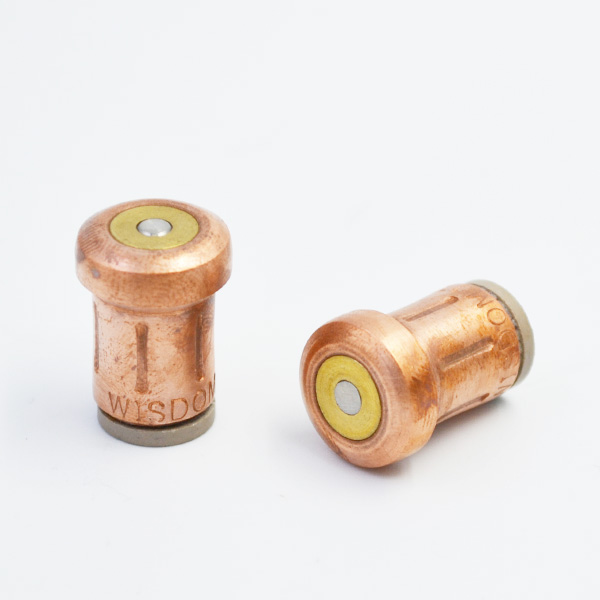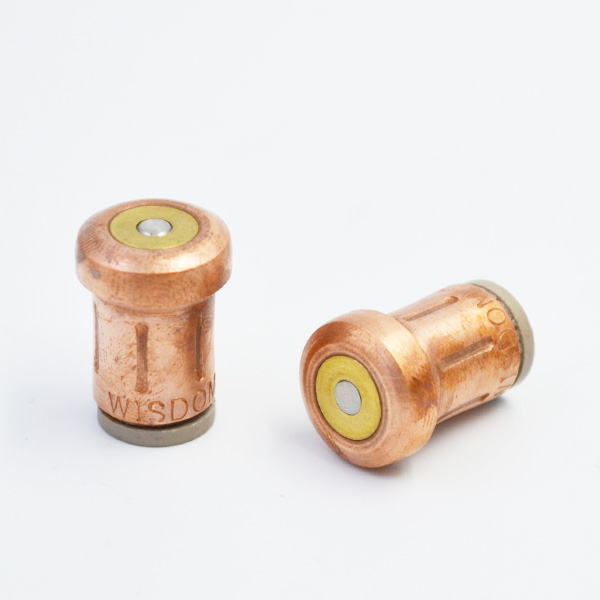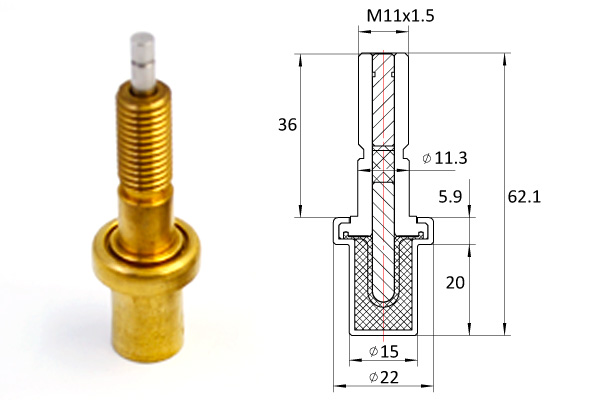In this paper, the control of two-wheeled robot is studied.
The main purpose is to solve the difficult problem of parameters of PID controller. In this paper, a new method is designed to construct neuron PID controller. By using this controller, the adaptive ability and self-learning ability of neurons have been greatly improved. The parameters of the controller can be adjusted on-line in real time.
Then a non-linear model of the two-wheeled robot is constructed. The neuron PID control system is discussed. Then its algorithm is discussed, and the parameters of the controller are analyzed. Then the control designed in this paper is applied to the balance control of the two-wheeled robot.
Device. Finally, the controller designed in this paper is compared with the traditional controller, and the effectiveness and accuracy of the controller are enhanced by simulation.

Then the controller is applied in the physical system of two-wheeled robot, and the actual effect is very good. Two-wheeled robot system has the characteristics of non-linearity and instability. How to control it has always been the focus of academic research. At present, there are many solutions to this problem, such as classical PID control and fuzzy control and state feedback control. In this process, the state feedback control mainly depends on the exact model of the system.
Although there is not much relationship between model control and mathematical model, the effect of control will be affected when making control rules and choosing fuzzy universe and membership function. In practical application, the PID controller has many advantages, thermostatic element such as less or no dependence on mathematical model and less adjustable parameters. However, the traditional PID controller also has many shortcomings and has some problems. The most prominent one is that it is difficult to tune the parameters of the controller. In view of the existing problems, the author designs a neuron PID controller based on neuron theory.
The controller makes full use of the adaptive ability and self-learning ability of neurons, and adjusts parameters at any time. It effectively solves the problem that parameters can not be well tuned in traditional methods, and the ability to adapt to environmental changes is not the same. Changqiang. The simulation results show that the model is very effective and correct.
Finally, the neuron PID controller designed in the physical system of the two-wheeled robot is applied to control the balance of the two-wheeled robot, and it also achieves very good results. As the earliest developed control strategy, the design algorithm and control structure of PID controller are relatively simple, and it is very suitable for engineering application background. In addition, when applying the PID control scheme, the requirements for the controlled object are not high, even for the mathematical model, the accuracy of the requirements is not high, and when using the PID controller, the control effect is usually satisfactory [1]. Therefore, the current industrial field for the application of PID controller is very wide, has become a very good control strategy, and the application in various fields has also been successful. For linear non-time-varying and lower-order control systems, the use of PID control has a very strong tracking and anti-jamming ability, can obtain the desired characteristics, especially for low-order systems, and then better control parameters, to promote its optimization. But the PID control itself has some limitations. In some cases, the control performance of the PID controller will be greatly affected, such as the changing of system parameters or the tracking of a reference trajectory instead of a simple set point.

At this time, it needs to be corrected, so it should be applied to the self-tuning controller. In addition, if the system is very lagged, its performance will be greatly affected and then destroyed, and special measures need to be taken at this time. As for neurons, their self-learning and self-adapting abilities are better. They can be processed in parallel, and their fault-tolerant ability will be greatly improved. When artificial neuron is applied in the control process, it can make the controller more intelligent, and adjust the parameters of the PID controller on-line, which can further enhance the anti-interference ability and robustness of the controlled system. Neurons are a kind of biological model, which is based on the neurons of the biological nervous system.

When people study this, they discuss the mechanism of artificial intelligence, and then express the neurons in mathematical form, and construct the neuron mathematical model [2]. From the essence of neurons, it is mainly a multi-input and single-output processing information unit, which is also non-linear in processing information. The PID controller belongs to a linear controller, which combines the time function of the error between the output and the given quantity and calculus linearly, and then constitutes the control quantity. It also controls the proportional calculus, which is called the PID control here. By comparing and analyzing the conventional PID and neuron PID controllers, we can find that they have very similar forms. The parameters of neuron control system can be adjusted adaptively, so its robustness is very strong. If the controller object is regarded as the output layer of the neural network, the neuron and the control object can be regarded as an extended network. By using the learning algorithm, the parameters of PID control are adjusted in real time according to the changing characteristics of the object. Generally speaking, Lagrange method and Newton Euler method are commonly used in building models. In this paper, Newton Euler method is used to construct the mathematical model of two-wheeled robot. Then, based on the four main assumptions, the non-linear equations of robot dynamics are constructed. The four basic assumptions are: firstly, wheels and robots are rigid bodies; secondly, wheels and ground will not slip; thirdly, robots are not disturbed by the outside world or even by the outside world, they are not right. Fourthly, the sliding friction between the upper body and the wheels of the robot is not considered. For two-wheeled self-balancing robot, the control variable is mainly the electrode voltage, and then the torque is converted to the direction of motor voltage when the model is built. In addition, the DC motor torque should be introduced into the model when building the model, and the relationship between the control voltage and the DC motor torque should also be considered and embodied in the model. If the speed of the motor is low or not high, the armature inductance can be ignored, and the viscous damping coefficient need not be considered.
In addition, the dynamic characteristics of two-wheeled self-balancing robot are described by constructing equations. When constructing two-wheeled self-balancing robot, the neural network technology and the PID controller are fully combined, and then the self-learning function of the neural network is applied. At the same time, the ability of the neural network to represent the non-linear function is applied. It is required that the parameters of the PID controller be adjusted intelligently on-line according to the optimal index, so that it can satisfy the controlled object. The parameter requirements can also better adapt to the change of structure, and also to the change of input reference signal, and can better cope with the impact of other interference. For neural network control, the most basic control element is the neuron. On the basis of conventional PID control, the input of a single neuron is set to the error ratio and calculus, and then the controller of the two-wheel automatic balancing robot is formed. When the neuron PID controller is used in the two-wheel robot controller, the input and output of the converter are set to a fixed value, then the output of the converter is set to the state that the neuron needs to apply, and the proportion coefficient of the neuron is set [4]. After building the model, it can be found that when neuron PID controller realizes self-adaptive and self-organizing functions, the main application method is to adjust the weighting coefficients. When adjusting the coefficients, the application method is learning rules. If the ratio coefficient of neurons is larger, the rapidity of neurons is better, but if it is larger to a certain extent, it may also cause instability of the system. If the ratio coefficient of neurons is smaller, it may affect the rapidity and lead to its deterioration.
In order to validate the effectiveness of the algorithm, we need to build a policy model for the non-linear model that has been built. At this time, we can choose the environment of Matlab to validate the model of the two-wheeled robot. Subsystan is used to simulate the two-wheeled robot system, while the control and learning algorithms are mainly based on the S function module.

In the process of experiment, neuron PID controller and traditional PID controller are used respectively. Firstly, the latter strategy is applied to balance the robot, and a set of parameters are selected to maintain the balance between the two. Then these parameters are taken as a reference when applying the former strategy, which not only saves the time of obtaining parameters, but also effectively prevents the influence of subjective factors on the experiment. The balance of the two-wheeled robot can be better controlled by reasonable selection of various indicators. Under the two control strategies, the actual obliquity and velocity response curves of the robot are actually different. It can be concluded that the response performance of the two-wheeled robot system is obviously improved by using neuron PID controller, resulting in a certain reduction in the transition time and overshoot of the system. Through simulation experiments, it can be found that the application of neuron PID controller in two-wheel robots is not only effective but also very successful. In determining the parameters of neuron PID, the main basis is the parameters of traditional PID controller, so there is no blindness in the experiment [5].
Under the same initial conditions, the application of neuron PID controller can effectively improve the response performance of the robot, while continuously enhancing the stability of the system. Compared with traditional PID controller, when neuron PID controller is used in two-wheeled robot control, its weight can be adjusted effectively, and then the parameters of the PID controller can be adjusted online, so as to continuously enhance its self-learning and self-adaptation ability. Considering the control algorithm and controller learning algorithm, neuron PID is relatively simple, and can be transplanted into various digital microcontrollers, such as DSP and some microcontrollers. Therefore, the research of this paper shows that the controller has certain practical value and can be applied in the control of two-wheeled robots.
